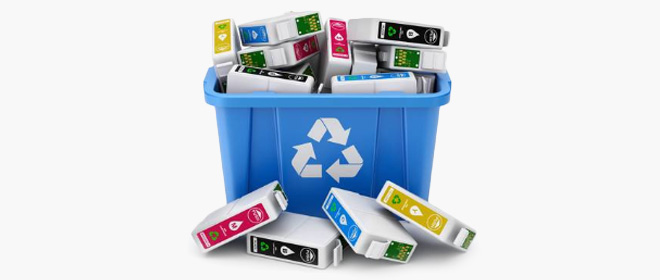When it comes to printing, choosing between a cartridge and toner is a decision that can significantly impact your printing experience. Both options have unique characteristics and cater to different printing requirements. In this article, we will delve into the differences between cartridges and toners, exploring their advantages and disadvantages. By understanding their distinct features and considering your specific needs, you can make an informed choice and select the option that better suits your printing tasks. If you want to sell ink cartridge then feel free to reach out.
Cartridges: Versatility and Convenience
Cartridges are commonly associated with inkjet printers, which use liquid ink to produce high-quality prints. One of the primary advantages of cartridges is their versatility. Available in various colors, cartridges are ideal for producing vibrant graphics and photos. Whether you need to print family pictures or create marketing materials with eye-catching visuals, cartridges offer excellent color accuracy and image resolution.
Furthermore, replacing and installing cartridges is relatively easy and convenient. Inkjet printers often have simple mechanisms that allow users to swap out cartridges with minimal effort. This convenience is particularly beneficial for individuals who need to frequently switch between different ink colors or replace empty cartridges promptly.
Another advantage of cartridges is their compatibility with a wide range of printing media. Whether you are printing on regular paper, photo paper, or specialty materials like stickers or iron-on transfers, cartridges can handle different surfaces. This versatility makes cartridges suitable for both home and office environments, where diverse printing needs are common. Additionally, cartridge-based printers are often more affordable upfront compared to laser printers, making them a cost-effective option for budget-conscious users.
Toner: Efficiency and Cost-Effectiveness
Toner is predominantly associated with laser printers, which employ a fine powder composed of pigments and polymers. Laser printers use heat and static electricity to fuse toner particles onto paper, resulting in sharp, smudge-resistant prints. Toner-based printing offers several advantages over cartridges, especially for high-volume printing needs.
One significant advantage of toner is its efficiency. Laser printers equipped with toner cartridges are designed to handle large print volumes quickly and reliably. If you work in an office environment where speed and productivity are paramount, toner printers can significantly enhance your workflow. They are well-suited for printing text-heavy documents like reports, contracts, and presentations. The sharpness and clarity of toner prints give a professional appearance to your printed materials.
Additionally, toner cartridges have a higher page yield compared to ink cartridges. This means that toner cartridges generally last longer, reducing the frequency of replacement and lowering long-term printing costs. While toner printers may require a higher initial investment, they often prove to be more cost-effective in the long run, particularly for businesses with significant printing requirements.
Choosing the Right Option: Factors to Consider
To determine whether a cartridge or toner is the better choice for your printing needs, several factors should be taken into account:
- Print Volume: Consider the volume of printing you expect to undertake. If you require high-volume printing or need to print primarily text-based documents, a toner-based laser printer would be a more efficient choice. The fast printing speed and high-capacity cartridges of laser printers make them ideal for demanding printing environments. On the other hand, if your printing needs are occasional or involve graphics-intensive tasks, a cartridge-based inkjet printer would suffice.
- Print Quality: Assess the importance of print quality for your specific requirements. If producing vibrant photos and graphics is your priority, cartridges offer superior color accuracy and image resolution. The liquid ink used in cartridges allows for smoother color gradients and precise detailing, resulting in visually appealing prints. However, if sharp text and professional-looking documents are essential, toner-based prints would be more suitable. The fusion process used in laser printing ensures crisp and clear text, making toner a preferred choice for documents that require a more formal appearance.
- Budget: Consider your budget and long-term printing requirements. While toner printers tend to have a higher initial cost, they can provide significant cost savings in the long run due to their higher page yield and lower cost per page. Toner cartridges last longer, requiring less frequent replacement, which can translate into reduced printing expenses over time. Cartridges, on the other hand, are more affordable upfront but may require more frequent replacements, resulting in higher ongoing costs.
Why is toner more expensive than ink?
When it comes to printing, two primary consumables come to mind: ink and toner. While both serve the purpose of transferring images and text onto paper, many individuals have wondered why toner cartridges tend to be more expensive than ink cartridges. In this article, we will delve into the cost dynamics behind toner and ink, shedding light on the factors that contribute to the price disparity. By understanding these factors, you’ll gain insights into the reasons why toner is generally pricier than ink.
Composition and Complexity
Toner and ink differ significantly in terms of composition and complexity, thereby affecting their production costs. Inkjet printers utilize liquid ink cartridges that contain water, colorants, and additional additives. On the other hand, laser printers employ toner cartridges that consist of a fine powder composed of plastic resin, pigments, and magnetic particles.
The manufacturing process of toner is more intricate and involves various stages, including mixing, melting, grinding, and sifting, to achieve the desired particle size and consistent quality. These additional steps in toner production contribute to the higher cost of toner cartridges compared to ink cartridges.
Print Volume and Page Yield
Another crucial factor that contributes to the cost difference between toner and ink is the print volume and page yield. Toner cartridges are designed to handle high-volume printing, making them ideal for businesses and offices that require frequent document production. Laser printers equipped with toner cartridges can yield a significantly higher number of pages compared to inkjet printers.
In contrast, ink cartridges are more suitable for home users or individuals with moderate printing needs. Inkjet printers tend to have lower page yields due to the limited capacity of liquid ink cartridges. Therefore, the higher page yield of toner cartridges justifies their relatively higher price, as they offer a cost-effective solution for heavy-duty printing tasks.
Printing Speed and Efficiency
Printing speed and efficiency are key considerations for businesses and professional environments. Laser printers, which use toner cartridges, are renowned for their rapid printing capabilities. The advanced technology employed in laser printing enables the printer to produce high-quality prints at a significantly faster pace compared to inkjet printers.
Inkjet printers, on the other hand, are generally slower in operation. The intricate movement of the printhead and the time required for the liquid ink to dry onto the paper contribute to slower printing speeds. Consequently, the higher price of toner cartridges is justified by the enhanced efficiency and productivity they offer, particularly in fast-paced work environments.
Durability and Longevity
One of the notable advantages of toner cartridges is their superior durability and longevity. Toner prints are resistant to water, smudging, and fading, making them ideal for documents that require longevity and preservation. Moreover, toner cartridges can retain their quality for extended periods of inactivity, making them more reliable in professional settings.
In contrast, inkjet prints are more susceptible to smudging, fading, and water damage. Ink cartridges are generally not as resistant to external factors as toner cartridges, which necessitates extra care when handling inkjet-printed documents. The longer lifespan and durability of toner prints justify the higher price associated with toner cartridges.
Conclusion
The cost disparity between toner and ink cartridges can be attributed to several key factors. The complex composition and manufacturing process of toner, combined with its ability to handle high print volumes and yield more pages, contribute to its higher price. Additionally, toner cartridges offer faster printing speeds, enhanced efficiency, and superior durability, which justifies the premium price tag.
It is essential to understand these factors when considering the overall cost of printing, as they help users make informed decisions based on their specific requirements. By evaluating the needs for print volume, speed, durability, and longevity, individuals and businesses can choose the consumables that best align with their printing demands while considering the associated costs.





